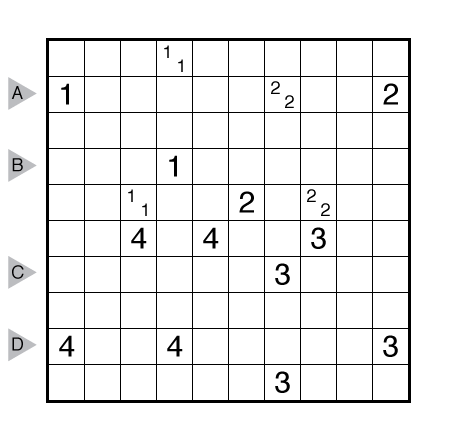Doctor’s Note #10 – The End of the Beginning
When I originally was planning to launch the site, I had a 60+1 puzzle roll-out in mind. In this puzzle set, I would introduce many of my styles from the past, particularly sudoku, and also write a lot of styles I’m planning to publish in the future. All of those roll-out puzzles have now been released, even if I only have recorded solvers for the 60 announced puzzles and none so far for the +1. That “puzzle” is not at all hard to solve once you find it, but that’s the challenge!
I’d love to hear your feedback now that the full set is released on which were your favorite puzzle types or even your favorite puzzles, so I can consider how to focus going forward. Which type(s) that did not occur would you like to see in the future? The Art of Puzzles will feature challenges in five general genres: Number Placement (TomTom and Skyscrapers), Object Placement (Battleships and Star Battle), Shading (Nurikabe and Tapa), Region Division (Fillomino and Cave), and Loop (Masyu and Slitherlink). And — while this is commercially risky in many people’s minds — it will have no Sudoku puzzles at all. So over the coming weeks, there will be fewer (but not zero) sudoku puzzles on this site as the puzzle styles in The Art of Puzzles get even more focus. And there may finally be a few variations on puzzles, but I won’t be publishing variations until the sequel!
I’ve gotten some questions about how I can keep up with posting so many puzzles every week. Well, I plan to take a little time off now. I have not written any puzzles for this week. But I hope you still visit to solve the puzzles that are here that you might not yet have completed — or found — and anything else that might pop up too. This is the end of the beginning, but the next chapter will be even more incredible.

